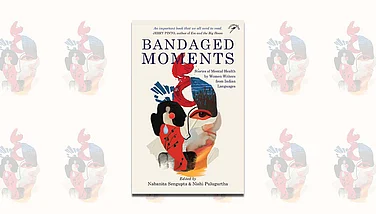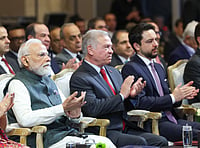Tarlo documents the changing attitudes towards clothes in India from the early colonial period to the present day. She set out to study the significance of women's embroidery in a Gujarati village in 1988 and found herself in a farcical situation: "There was I, showing inordinate interest in embroidery, when the women who actually made it were largely uninspired. Some had given up wearing it altogether, while others who still did confessed they were embarrassed by its backward connotations and were keen to be rid of it."
Other anthropologists may have stuck to their guns (or needles) at this point. But Tarlo is made of sterner stuff; she rises to the challenge, abandons her original quest and sets out on a whole new journey. So instead of a dry tome on the transition from cross-stitch to running, we have a colourful, fascinating and entertaining book whose repercussions resonate well beyond her chosen country, and well beyond the complex matter of clothing.
A large part of the book is devoted to Gandhi, whose ability to deploy the politics of dressing remains unsurpassed. His transition from dhoti and kurta to full western attire and the bare body and khadi loincloth icon that he became is literally the material evidence of his evolution as a political and spiritual actor. Gandhi's khadi crusade shifted the emphasis from style to actual material. It was no longer enough to reject western styles to demonstrate one's nationalism: the cloth itself was politicised.
However, even this Grandmaster of clothing could not control its meaning, and Tarlo unpicks his sartorial message deftly. The great social leveller, which Gandhi had championed, quickly became nuanced with subtle distinctions: the finer 'silk khadi' weaves sported by the upper classes contrasting sharply with the coarse cloth worn by those whose choices were dictated more by lack of money than by political leaning. White khadi kurtas are now associated more with hypocritical and manipulative politicians than with moral purity.
Notions of backwardness and progress are key components in dictating clothing choices of women in the Gujarati village where Tarlo stayed. In each of the different caste groups there is a story to be told: the problem of Hansaben's cardigan, of Liliben's skirts, and 'the embarrassing case of the Bha-rward groom in trousers' read like parables, each crystallising in anecdotal form the vital social, gender and cultural problems of the villagers, be they Brahmins or Harijans.
Unlike many western academics whose views of Third World problems are entirely cast in the frame of the West vs the Rest (a common critique of post-colonial theories), Tarlo manages to hold back her own perspective to let others' come through. Hansaben's cardigan, for example, sparked off a major family row not because her father-in-law thought it was too westernised but because it was of a 'city style'—inappropriate, in his eyes, for a village wife.
Tarlo also analyses the different stitches, and patterns which the villagers traditionally use. Far from being a purely 'academic' exercise, this highlights their changing attitudes towards 'home and the world' and amply demonstrates that her own attempts at traditional Gujarati embroidery has not turned her brain to yoghurt, as her native informants had feared.
The commodification of ethnici-ty, as Robert Young puts it, is big business in India. The crafts museums, the melas, government emporia, and tourist and textile industries rely heavily on selling India's 'Indianness'. This is a far cry from Gandhi's hopes for a more egalitarian, and self-sufficient economy, and the 'Fashion Fable of an Urban Village', as Tarlo frames the story of Hauz Khas, tells us more about the destructive dynamics of late capitalism than anything. One comes away from this beautifully illustrated, and intelligently constructed book convinced that, if nothing else, clothing matters. Our 'second skin' is as intimate as our first; it's an expression of togetherness as well as individuality; a way to conceal as well as reveal; a way of speaking without words. As Alison Lurie says in her Language of Clothes: "We can lie in the language of dress, or try to tell the truth; but unless we are naked and bald it is impossible to be silent." What gets said and what you mean to say may be two different things; but what Tarlo demonstrates brilliantly is that in either case, it's worth listening to.


























